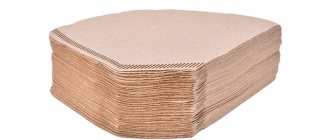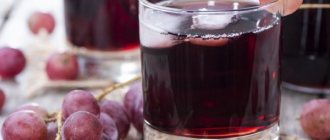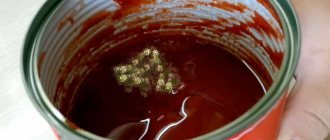Why is churchkhela so remarkable?
This is a very old Georgian dish. The benefits of such a delicacy are determined by the type of churchkhela. It can be made from a wide variety of berries. Quality can also vary greatly. If you do everything correctly and follow the entire technological process, the delicacy enriches the human body with the necessary microelements and vitamins.
Churchkhela is a great dessert. Nutritious, satisfies hunger well. At the same time, you won’t overload your stomach with this dish.
If the delicacy is prepared correctly, then churchkhela can be preserved for a very long time. At the same time, you don’t need to worry about the fact that over time it will contain fewer nutrients. Useful components retain their value for a very long time.
Initially, the delicacy involved the inclusion of exclusively healthy ingredients that help the human body cope with physical and mental stress. Grape juice is an indispensable medicinal product. There are scientific works devoted to its therapeutic effects on the human body.
On a note .
When concentrated grape juice is added to real chuchkhella, the delicacy exhibits a truly miraculous effect. But this applies only to natural delicacies, which should be prepared according to all the necessary canons.
How to choose store-bought churchkhela and eat it correctly?
The most delicious churchkhela is freshly prepared. It has a hard shell and a soft core.
- If the product is elastic, bends and unbends easily, it will most likely taste like rubber.
- Sugar frozen on the surface indicates a violation of the cooking technology.
- Cracks indicate improper drying or excess flour - a violation of the recipe.
- A damp or softened crust, traces of mold, or crumbling sausages indicate unsuitability.
It is not customary to wash dessert before eating - it is believed that this will lose the taste of natural juice. Eat without preparation, as a dessert or snack.
Severely dried churchkhela can be softened in several ways:
- hold over steam;
- soak in water;
- place in the microwave for a few seconds.
It is better to refresh the amount that will be eaten immediately, especially in the microwave.
Traditional method of making churchkhela
The original version of the technology for making the Georgian delicacy involves using only walnut kernels and grape juice. In order to properly prepare churchkhela, it takes time. Despite this, the process is not difficult. The main thing is to follow the recipe exactly. After all, churchkhela is healthy and can be stored for a very long time if it is made from natural ingredients. It must be dried under natural conditions.
Churchkhela, which is prepared on an industrial scale, will no longer have so many useful qualities. It will not enrich the body with microelements and vitamins.
The manufacturing technology is as follows:
- The juice is squeezed out of the grapes; it will only be needed in concentrated form.
- In order for the liquid to reach the desired thickness, corn flour is added to the juice.
- Take a simple strong thread. Using a needle, pieces of walnut are threaded onto it.
- The preparation with nuts is repeatedly dipped into thick grape juice. They need to cover the treat in a thick, even layer. If the juice is not very thick, then after an hour and a half the churchkhela is covered again. This is done several times until you get sweet, tasty nut threads coated with thick caramel.
- Semi-finished products are sent to dry in a dark and perfectly dry room. Drying will continue for at least 7-10 days.
If you use unnatural thickeners at this stage, the process will speed up and become simpler, but the usefulness of the product will be lost. An unnatural delicacy will not only reduce its usefulness, but also cause harm.
On a note. You should not make the thread with nuts too long, it will not support the large mass.
Only raw, thoroughly dried nuts are used. No need to fry them! They will begin to crumble; in this form they cannot be strung on a thread.
A classic recipe for preparing Georgian sweets - churchkhela
Flour is added to the infused juice in the proportion of 1 glass without top per 1 liter.
When preparing churchkhela, it is important to avoid the formation of lumps. For this purpose, the flour is first mixed with a small amount of heated juice.
The mixture is boiled over very low heat with constant stirring until the consistency of thick jelly is reached. The resulting mass is called tatara.
Halves of dried nuts are strung on a thread. Leave 5 cm from the last nucleolus to the edge to tie a loop for hanging. On the opposite side it is secured with a knot.
Beads made from nuts are immersed in tatara that has cooled to about 50°, thoroughly soaked and hung for 2-3 hours.
The immersion procedure is repeated several times until a shell 1.5-2 centimeters thick is obtained. At this time, maintain the temperature of the mixture using a water bath or periodic heating.
For final drying, the threads are hung in a dark place for 5-10 days at a temperature of 15 to 25 degrees.
The finished churchkhela is elastic and does not stick to your hands. Now the sweetness can be wrapped in a towel or parchment and left in a dry, ventilated area for 1-2 months to ripen.
What could a modern churchkhela be like?
Churchkhela is already noticeably different from the invention of antiquity. The main and auxiliary ingredients are now apple, plum, cherry, orange, peach and other juices. Pomegranate juice gives the product the desired taste and special qualities. In addition to walnuts, other nuts are used, these can be peanuts, cashews, hazelnuts. The main thing is to be able to string the nuts onto a thread.
The delicacy today contains dried fruits, such as raisins, plums, various dried fruits, and berries. They are doused with syrup and rolled in nuts or seeds. The properties of the finished treat and its calorie content depend on the constituent ingredients. This is taken into account when purchasing churchkhela for children or adults who are overweight.
How many recipes does churchkhela have?
Pavel Syutkin notes that he did not count the number of existing recipes, but there are many of them. It is known that in 2011, the Georgian authorities patented churchkhela as a famous dish of national cuisine. But, as is often the case with old recipes, there are dozens of regional versions. In Georgia, churchkhela is made in various ways: Kakheti, Kartal, Imeretian, Mingrelian, Racha-Lechkhumi and Gurian. For example, Imeretian churchkhela is yellowish-brown from the juice of white grapes. Kakheti (from dark grapes) will be burgundy-raspberry with a white coating of sugar on the surface. Corn or wheat flour is often added to the boiled juice for thickness. Churchkhela is also prepared from pomegranate juice, and today it is even made from cherry, apple or raspberry juice. In addition, recipes for the traditional Georgian dessert are also available in Turkey, Azerbaijan, and Armenia. The technologies are very similar everywhere, the writer adds, only the ingredients used differ. Armenian churchkhela (sharots) is traditionally softer than what we are used to. Cinnamon, cloves, and cardamom are added there.
Article on the topic
Churchkhela or churchkhela - which is correct?
Useful qualities
Churchkhela, which is prepared from natural raw materials, becomes a source of various beneficial substances for humans. Whatever fruits, berries, and nuts the delicacy contains, it will contain:
- glucose, fructose, and these are ideal energy suppliers for humans.
- organic acids that participate in the body's metabolic processes;
- vegetable fats, which play an important role in preventing the formation of blood clots and remove excess cholesterol, in addition, improve blood supply to the brain.
- vitamins, which are included in churchkhela in large quantities, are involved in metabolism, strengthen the immune system, and sharpen vision.
- mineral elements play a role in maintaining metabolism.
If you regularly consume churchkhela, even in small quantities, the result will be as follows:
- energy activity will increase;
- brain activity will improve;
- the functioning of the cardiovascular and digestive systems will improve;
- the risk of atherosclerosis and hypertension will decrease;
- the person is rejuvenated.
On a note . To get all the results listed, you should include only natural, naturally prepared products in the menu. It cannot contain thickeners, preservatives, or other various harmful chemical elements.
From store-bought juice
Not the best option, but after all, you drink store-bought juices from manufacturers you trust! Try making a treat from them.
Duration of production of delicacies: 2-3 days Portion yield: 10-12 pieces. Necessary equipment: frying pan, 2-liter saucepan with a thick bottom, sieve, faceted glass, bowl, whisk, sharp needle and 10-12 strong threads 50 cm long, spatula or spoon, structure for drying churchkhela, film or paper under her.
Ingredients
| Packaged juice | 1 l |
| Shelled nuts | 0.6 kg |
| Wheat flour | 1 stack |
| Granulated sugar | 2-4 tbsp. l. |
Step-by-step recipe for churchkhela from store-bought juice with photos
- Heat 2 cups of nuts in a hot, dry frying pan until they smell nutty. Cut the walnuts into halves or quarters; do not chop the rest.
- Pour 600 ml of juice into a saucepan and bring to a boil.
- Add 2-4 tbsp. l. sugar and stir.
- Pour the remaining 400 ml of juice into a bowl, dilute 1 cup in it. sift flour through a sieve until smooth using a whisk.
- Pour the flour mixture into the boiling juice, stirring vigorously. Cook until custard-like consistency is reached for 10-15 minutes.
- Leave to cool for 15-20 minutes.
- While the jelly is cooking and cooling, thread the nuts onto the threads until the “beads” are 20-25 cm long.
- One by one, dip the nut “beads” into the jelly, helping with a spatula or spoon so that the sweet mass covers them completely.
- Hang the churchkhela by the free ends of the threads on the prepared structure and leave to harden for 2-3 days.
Video recipe for churchkhela from store-bought juice
From the video you will learn how to prepare churchkhela from packaged juice.
It remains to mention one more oriental sweet - sherbet, which can also be prepared at home.
Can churchkhela cause harm?
When eating churchkhela, you need to know that its calorie content is 600-700 units per 100 grams of delicacy. In addition, the components of churchkhela can cause allergic reactions.
Therefore, eating churchkhela for people with a tendency to obesity and poor physical activity is the path to excess weight. If you have diabetes, you should not eat it. Some other diseases of the endocrine system may also be contraindications.
During pregnancy and breastfeeding, it is better to avoid churchkhela. The baby may have allergies.
Due to the possibility of allergic reactions, churchkhela is made using the juice of foods that do not cause reactions: green apple, peach. But this is not at all the same Georgian churchkhela that was conceived several centuries ago.
On a note . Despite the side effects, the delicacy is extremely popular. Like some other sweet foods, it should be consumed in moderation. Then there is a chance to avoid both obesity and allergies.
On the other hand, the product can act as an excellent natural stimulant of energy reserves if consumed correctly. Usually it is enough to include chuchkhella in the menu once every three days to saturate the body with the necessary microelements. Since vitamins are stored in it for a very long time, the product is very useful to eat in early spring, when the body is exhausted after winter and there is a lack of sunlight.
The churchkhela itself is also a drop of sun. It has absorbed all the best that nature gives us: the energy of grape berries and the power of nuts. And this is the path to beauty, health and Caucasian longevity.
Let's move on to action...
Before making churchkhela, first string all the nuts onto a thread, and at the end make a knot. If desired, hazelnuts can be combined with fruits, alternating products with each other. All that remains is to prepare a thick solution for dipping our “sausages”.
Pour the juice into a container, put it on fire, add the indicated spices with sugar and wait until it boils. Then cook for 5 minutes. During this time, prepare the flour dressing: stir the flour in 200 ml of juice and pour it into the grape “broth” in a thin stream. Don't forget to stir constantly, otherwise you will end up with one big lump.
Simmer on the stove until the marinade darkens, this takes 5-7 minutes. Let the juice cool to room temperature. Dip the threads with hazelnuts into the viscous mass and hang them by the ends with a clothespin. After 10 minutes, repeat the procedure again so that the homemade churchkhela is saturated with juice.
If you are preparing the dish in the summer season, then the “sausages” can be dried in the sun for 24 hours. Then hang it in a shady place and do not touch it for 3-5 days. Make sure that flies and other insects do not land on the product. The kids will love this sweet treat. It is healthy, tasty and nutritious.
Possible mistakes
- Raw or rancid nuts : Don't rely on the seller - sort them out yourself.
- Drying in the sun : the sweet shell dries out, cracks, and the nuts do not have time to soak.
- Failure to comply with drying times : the inner layers of the jelly do not harden, and the nuts rot.
Now you know how to make churchkhela at home, but this is a basic recipe that you can supplement at your discretion. Tell us in the comments what you added, what juice you made it from and what came out of it.
What determines the shelf life?
Hazelnut churchkhela, prepared according to a traditional Georgian recipe, is not a perishable delicacy.
The shelf life of a product depends on several factors , but the key ones are the technology of preparation, drying, and transportation conditions.
When making factory-made churchkhela, manufacturers add a sufficient amount of lactose and nitrates.
Once the treat is ready, it is packed in a vacuum bag, due to which it is stored for a long period of time.
Classic churchkhela is prepared according to a traditional Georgian recipe and packed in paper bags or cloth.
Classic sweets are not stored as long as factory-made ones, and the shelf life depends on how correctly the production technology was followed.
Churchkhela made from mixed nuts
Despite the fact that the classic recipe prescribes making churchkhela from walnuts, experiments are possible. The taste can be made more interesting by using several types of nuts. To prepare six servings of this delicacy, you will need a nut mixture: walnuts (0.5 kg), almonds (0.2 kg), hazelnuts (0.3 kg). For this volume of nuts you will need 3 liters of grape juice and flour (2.5 cups).
The technology for preparing churchkhela does not differ from the classical one. But first you need to dry the almonds and hazelnuts in a frying pan for 5 minutes. Then you need to rub them in your palms. The calorie content of churchkhela in one piece is about 200 kcal, which will quickly satisfy your hunger with a healthy product.
The minimum aging period for sweets is 2 weeks. But if you let it hang for a few months, it will taste much better.








